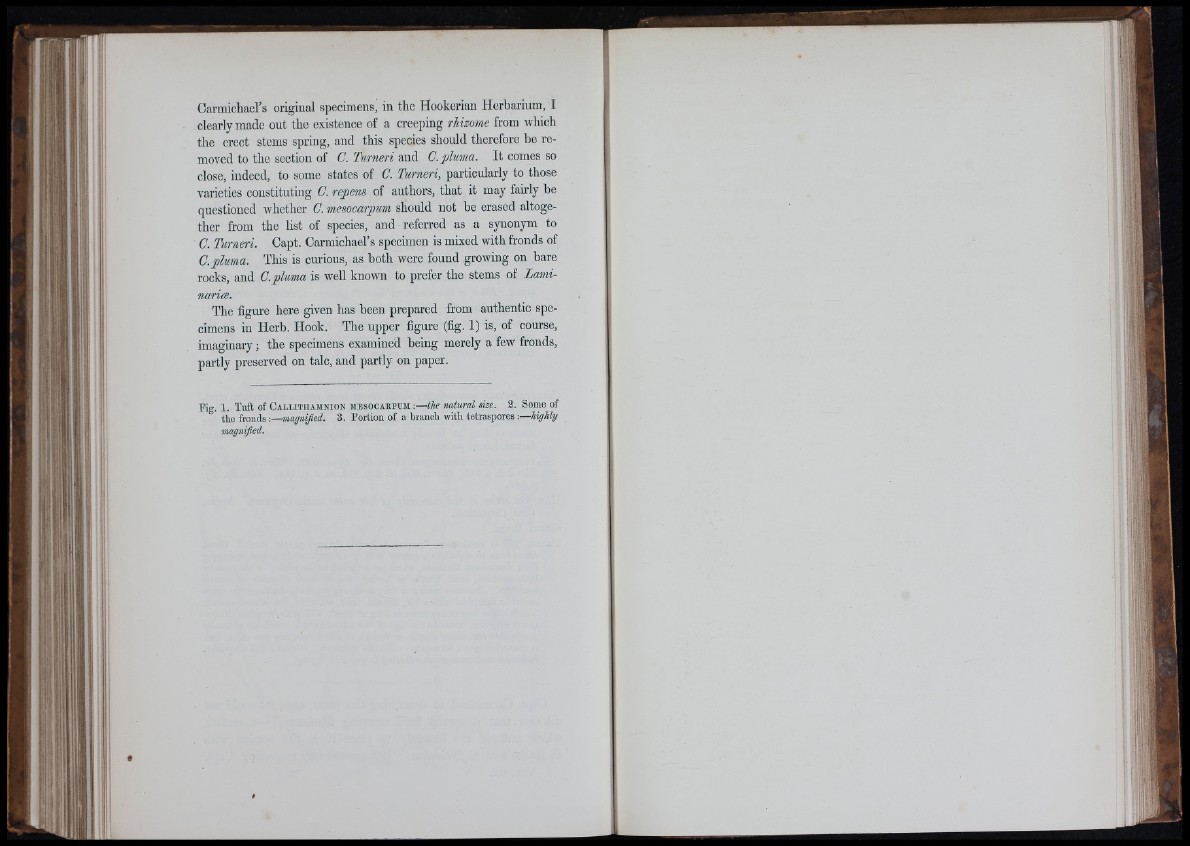
II
u
,!i:
iiA i
iIII 'r*
'f :ii!
,! ■ i|
Carmichael’s original specimens, in the Hookerian Herbarium, I
clearly made out the existence of a creeping rhizome from which
the erect stems spring, and this species should therefore be removed
to the section of C. Turneri and C. pluma. It comes so
close, indeed, to some states of C. Turneri, particularly to those
varieties constituting C. repens of authors, that it may fairly be
questioned whether C. mesoearpum should not be erased altogether
from the list of species, and referred as a synonym to
C. Turneri. Capt. Carmichael’s specimen is mixed with fronds of
C. pluma. This is ciu-ious, as both were found growing on bare
rocks, and C.pluma is well known to prefer the stems of Laminari(
B.
The figure here given has been prepared from authentic specimens
in Herb. Hook. The upper figure (fig. 1) is, of course,
imaginary; the specimens examined being merely a few fronds,
partly preserved on talc, and partly on paper.
Fig. 1. Tuft of Callithamnion mesocaepum :— the natural size. 2. Some of
the frouds:—magnijied. 3. Portiou of a branch with tetraspores -.— highly
magnijied.
I'll